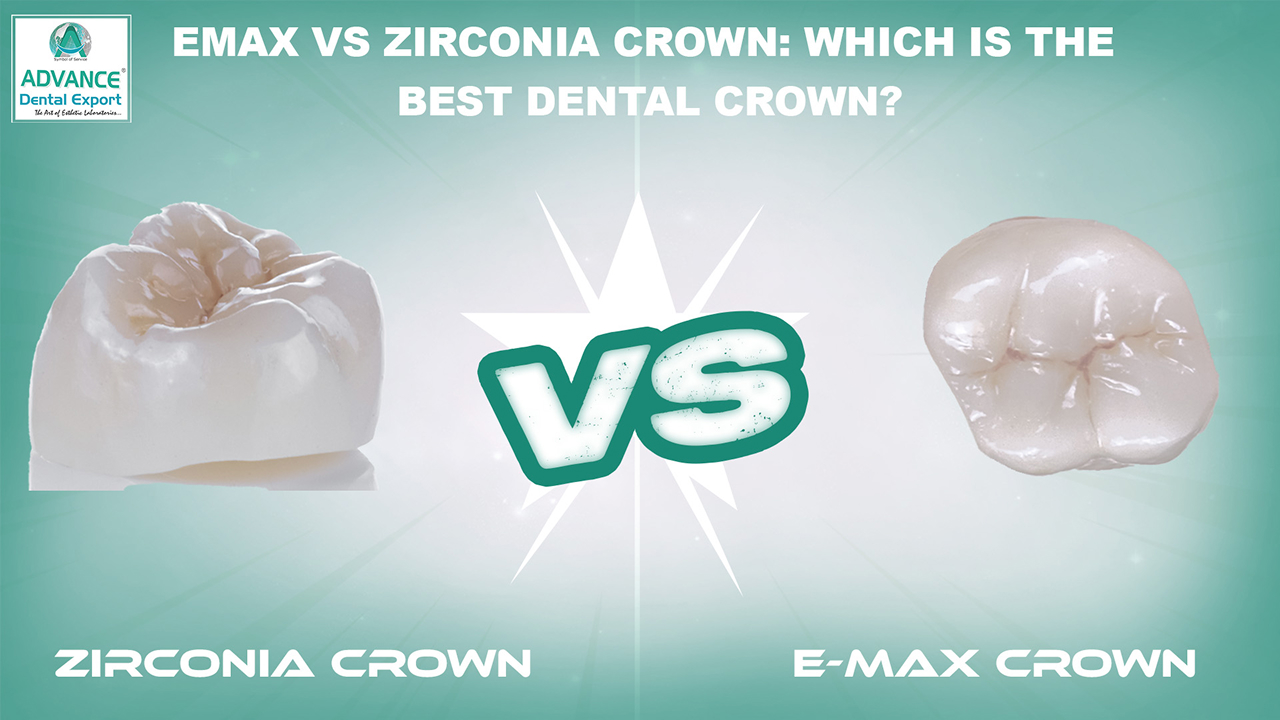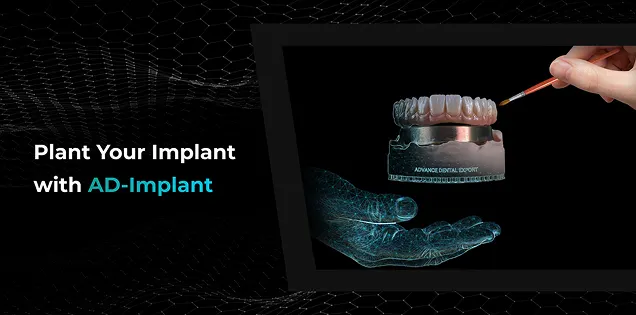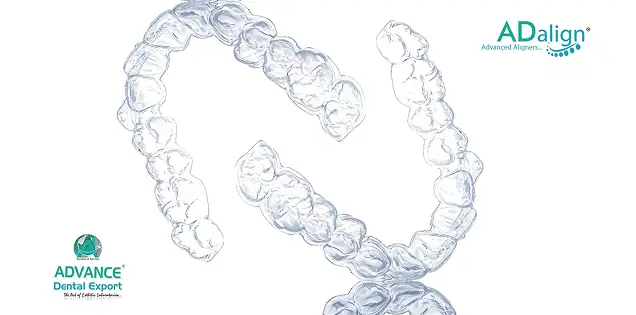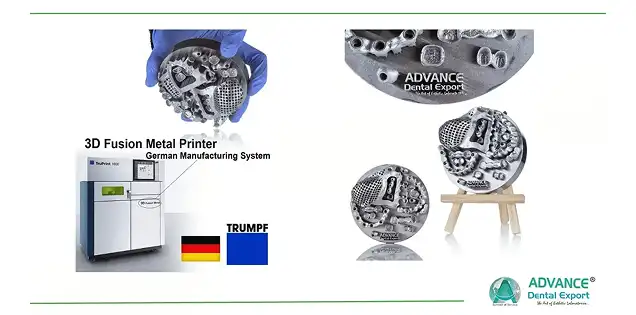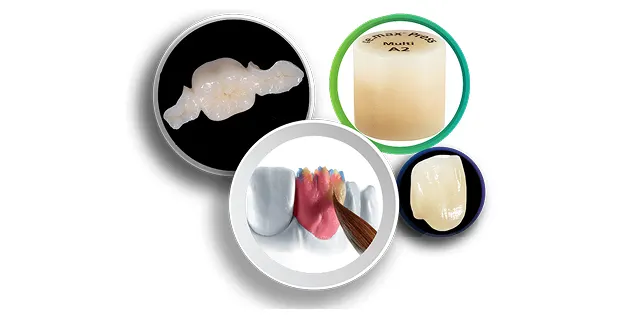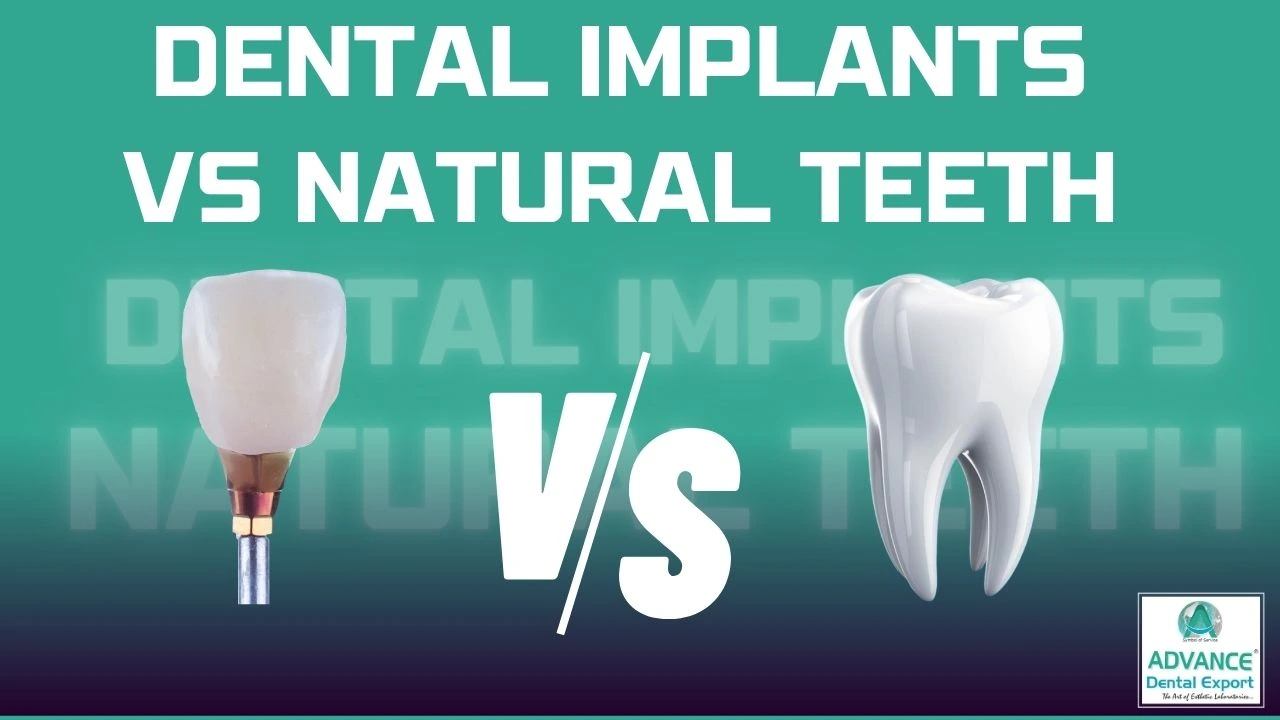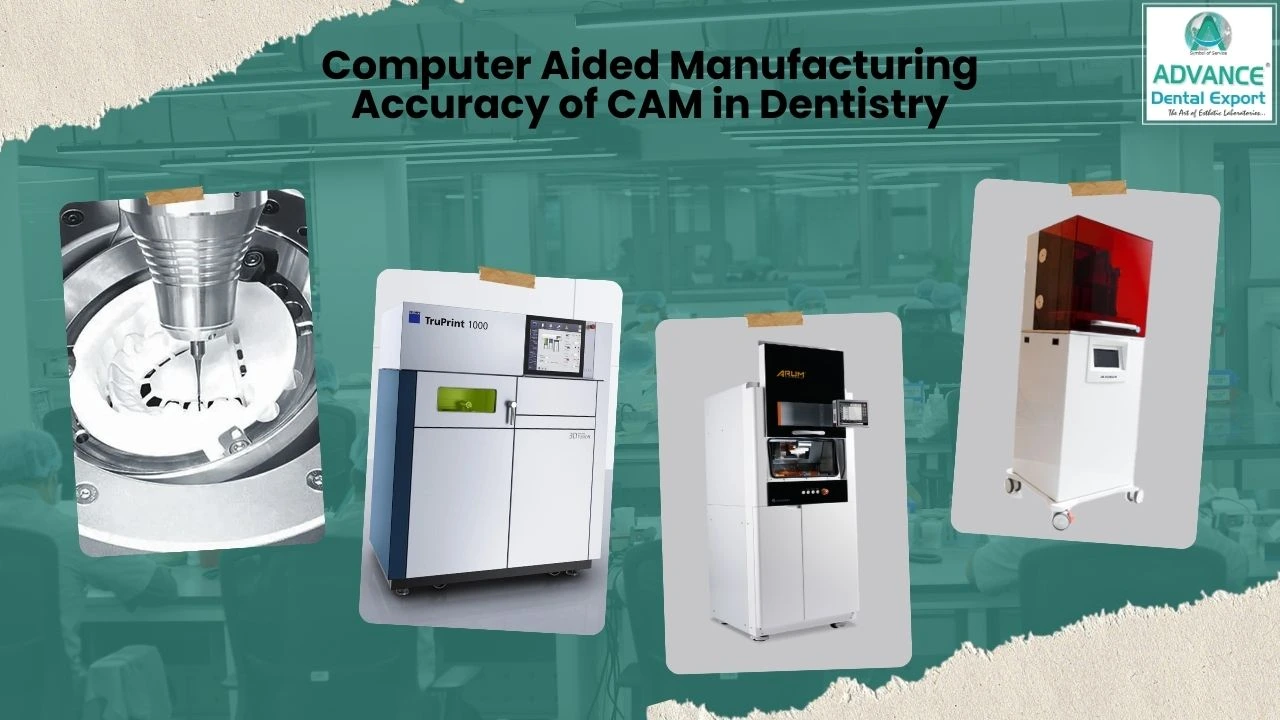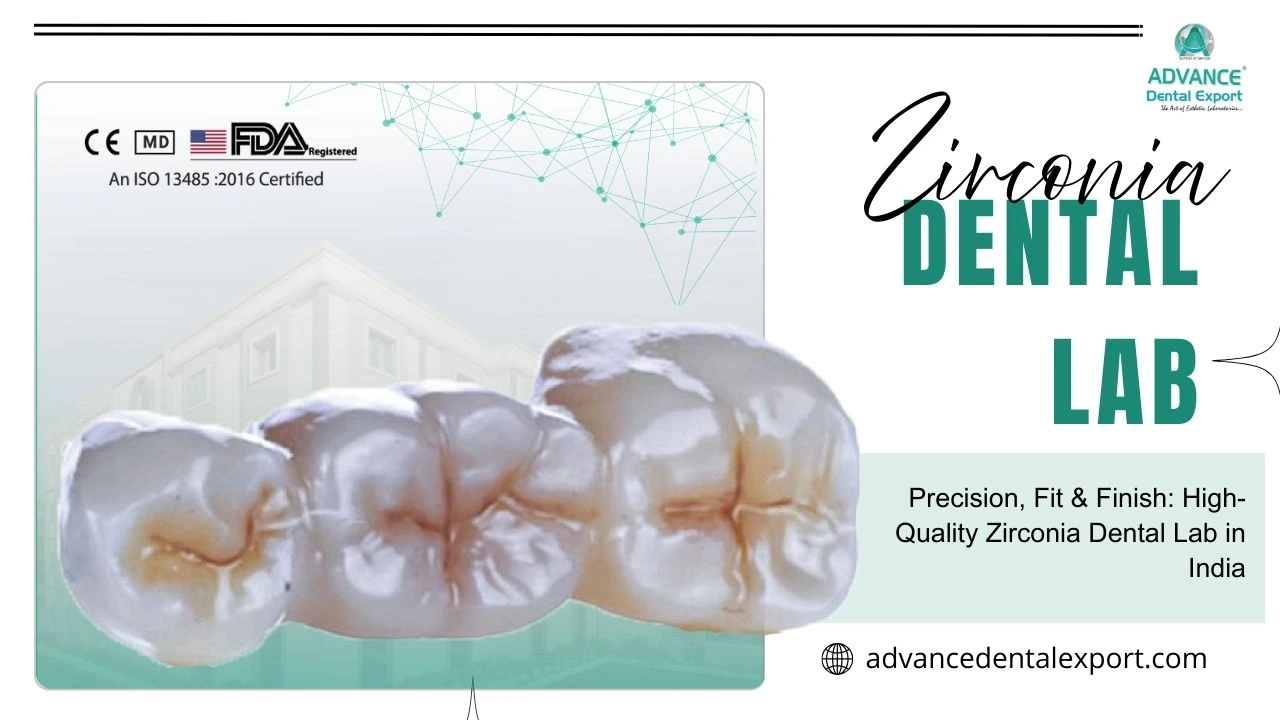You know, choosing the best dental crown material is a critical decision that balances material science with a patient's unique clinical needs and aesthetic expectations.
In the modern world, where digital dentistry is at its peak, the two dental materials that consistently stand out for their performance and versatility are Emax and Zirconia . Each represents a significant leap forward from traditional options, but their core properties are fundamentally different; choosing between them is a key factor in achieving a successful, long-lasting restoration.
For every dentist, understanding of these materials is essential for delivering the best possible care. This comprehensive guide moves beyond a simple feature list to provide a clinical perspective on Emax versus Zirconia crowns . We will delve into the specific characteristics, advantages, and limitations of each material. Our goal is to equip you with the detailed, evidence-based information needed to confidently select the right dental crown for every scenario.
In this blog, we will answer the most pressing questions you face in your practice:
- Which dental material offers the most natural, light-reflecting aesthetics for anterior restorations?
- Which provides the superior strength and fracture resistance necessary for posterior occlusal surfaces and multi-unit dental bridges?
- How do the preparation requirements, cementation protocols, and overall chairside time compare?
- What are the long-term clinical outcomes and factors to consider regarding patient-specific needs and cost-effectiveness?
By the end of this guide, you will have a clear framework to make informed decisions that enhance your clinical outcomes and boost patient satisfaction.
So, let’s start!
What is an Emax Crown?
An Emax dental crown is a type of all-ceramic restoration made from lithium disilicate. This material is engineered to offer an exceptional balance of aesthetic beauty and reliable strength. Unlike traditional porcelains, Emax is a monolithic block of ceramic, giving it superior fracture resistance and longevity. Its unique crystalline structure is the key to its impressive performance.
Main Advantages of Emax Crowns
The primary reason dentists choose Emax is its aesthetic excellence.
- Aesthetics : The defining feature of Emax is its remarkable translucency and opalescence. It has a natural, tooth-like appearance that allows light to pass through it, blending seamlessly with adjacent teeth. This makes it virtually indistinguishable from natural dentition. For patients prioritizing a flawless smile, Emax is an ideal solution.
- Usage : Given its aesthetic superiority, Emax is the best choice for anterior restorations, including single crowns, veneers, and inlays/onlays. It's the material of choice when a patient's primary concern is the most natural and attractive result.
- Biocompatibility : As a ceramic material, Emax is highly biocompatible and gentle on the surrounding gum tissue. It poses a very low risk of allergic reaction, making it a safe option for a wide range of patients.
Disadvantages of Emax Crowns
While Emax is a top-tier material, it does have specific limitations compared to other options.
- Strength : Although strong for a ceramic, Emax has a lower flexural strength than Zirconia. This limits its use in areas subjected to intense chewing forces.
- Limited Usage : Due to its strength profile, Emax is generally not recommended for posterior molars or multi-unit bridges. These areas require the highest possible resistance to fracture, which is where Zirconia excels.
In essence, Emax is the go-to material for restorations where the natural look and feel are the highest priorities.
What is a Zirconia Crown?
A Zirconia dental crown is a modern restorative option known for its exceptional strength and durability. Composed of zirconium dioxide, a type of ceramic, it has earned the nickname "ceramic steel" within the dental community. Zirconia is an all-ceramic material that has been a game-changer for its ability to withstand extreme chewing forces without fracturing, offering a level of toughness that was previously impossible without metal.
Main Advantages of Zirconia Crowns
Zirconia's key benefits are centered around its incredible physical properties.
- Strength and Durability : The most significant advantage of Zirconia is its superior strength. It has extremely high flexural strength and fracture toughness, making it highly resistant to chipping, cracking, or breaking. This makes it an ideal choice for patients who grind their teeth or have a powerful bite.
- Usage : Its remarkable durability makes Zirconia the best choice for posterior restorations, where biting forces are at their peak. It is also the material of choice for multi-unit bridges and implant-supported crowns, providing a stable, long-lasting foundation for a patient's bite.
- Longevity : Due to its robust nature, a well-placed Zirconia crown can offer a lifespan of several decades. This makes it a highly reliable and enduring solution for patients seeking a permanent restoration.
Explore Our Restorations
Disadvantages of Zirconia Crowns
Despite its strengths, Zirconia also has certain drawbacks that influence its clinical application.
- Aesthetics : Zirconia's primary weakness is its aesthetics. It is an opaque material that lacks the natural translucency of Emax. This can result in a restoration that looks more solid and less life-like, making it a less preferred option for highly visible anterior teeth.
- Wear on Opposing Teeth : Its extreme hardness can be a concern. If the crown's surface is not highly polished or properly glazed, it can cause accelerated wear on the opposing natural teeth, especially with patients who have bruxism.
- Longer Fitting Time : The hardness of Zirconia also makes it more difficult and time-consuming to adjust chairside. It requires specialized burs and a precise technique for polishing and final occlusal adjustments.
In summary, Zirconia is the definitive choice for restorations that demand the highest levels of strength and resistance to fracture.
Emax vs Zirconia: In-depth Comparison
The decision between Emax and Zirconia is a critical one, and understanding their distinct properties is key to a successful treatment plan. The following table provides a quick overview of the key differences, while the detailed breakdown below offers a deeper clinical perspective.
| Feature | Emax Crown | Zirconia Crown |
| Aesthetics | Superior, natural translucency | Good, more opaque |
| Strength | High, but moderate compared to Zirconia | Exceptional, extremely high |
| Best Use Case | Anterior teeth and single units | Posterior teeth and bridges |
| Durability | Excellent, but can be susceptible to fracture in high-stress areas | Exceptional, very resistant to fracture |
| Cost | High | High |
| Biocompatibility | Excellent | Excellent |
Aesthetics
When aesthetics are the primary concern, Emax is the gold standard . Its unique lithium disilicate material is highly translucent and has a natural opalescence that mimics a real tooth's enamel. This allows light to pass through the crown in the same way it would a natural tooth, creating a restoration that blends seamlessly and is virtually invisible.
Zirconia, on the other hand, is an inherently opaque material. While advancements have produced high-translucency Zirconia, it still lacks the light-refracting properties of Emax, making it a less preferred choice for highly visible anterior teeth.
For aesthetics, Emax wins the race due to its unmatched translucency.
Strength and Durability
This is where Zirconia truly stands out . Often referred to as "ceramic steel," Zirconia boasts a flexural strength of up to 1,200 MPa, making it one of the most durable materials in dentistry. It can withstand the intense chewing forces in the posterior region without the risk of fracture, chipping, or cracking.
While Emax is strong for a ceramic (with a flexural strength of around 500 MPa), its strength is considered moderate when compared to Zirconia. Emax is sufficient for single-unit crowns in the anterior, but it is not recommended for high-stress areas like molars or multi-unit bridges.
When it comes to strength and durability, Zirconia is the undisputed winner.
Biocompatibility
Both Emax and Zirconia are excellent choices from a biocompatibility standpoint. As all-ceramic materials , they are inert and do not cause allergic reactions or gum irritation, making them safe for a wide range of patients. Their smooth surfaces also resist plaque accumulation, which promotes better long-term gingival health around the crown's margin.
Best Use Case
The ideal application for each material is a direct reflection of its core properties. Emax is the definitive choice for anterior restorations, such as front single crowns, veneers , and inlays, where aesthetics and a life-like appearance are the top priorities.
Zirconia's superior strength makes it the best choice for posterior molars, multi-unit bridges, and implant-supported crowns, which require a restoration that can endure immense pressure and provide long-term stability.
Cost
Both Emax and Zirconia are considered premium restorative materials. The final cost to the patient can vary, but generally, both fall into a similar high-cost bracket.
Based on current market trends, here is a general price range for a single crown:
- Zirconia Crown: The average cost typically ranges from ₹15,000 to ₹25,000+ per single crown.
- Emax Crown: The average cost is often slightly higher, ranging from ₹15,000 to ₹20,000+ per single crown.
Factors influencing the price include the complexity of the case, the specific type of material used (e.g., monolithic vs. layered Zirconia ), and the dental laboratory's fees. It's important to discuss the cost-benefit of each material with the patient to manage their expectations regarding investment and long-term outcomes.
Which Crown is Best for You?
Making the right choice between Emax and Zirconia ultimately comes down to a few key questions about the restoration. Your final decision should consider the tooth's location, the aesthetic demands of the patient, and the occlusal forces at play.
Choose an Emax Crown if:
- You need a crown for a front tooth or a premolar . Emax's translucent properties make it the ideal choice for highly visible teeth where a flawless, natural appearance is non-negotiable.
- The patient wants the most natural look possible. The material's ability to mimic the light-refracting properties of a real tooth ensures a beautiful, life-like result that blends seamlessly with the patient's smile.
- You are placing a single-unit crown in a low-stress area . Emax provides excellent strength for these restorations without compromising on aesthetics.
Looking for a trusted lab partner? Get high-precision restorations from Advance Dental Export
Choose a Zirconia Crown if:
- You need a crown for a back tooth (molar) . Zirconia's superior fracture toughness and immense strength are essential for withstanding the heavy chewing forces in the posterior region.
- The patient requires a very strong and durable crown . Zirconia is the most reliable choice for patients with a heavy bite or a history of bruxism, providing a long-lasting and dependable restoration.
- You are fabricating a bridge or an implant crown . The high strength of Zirconia makes it the gold standard for multi-unit bridges and implant-supported restorations, where a stable and robust framework is required.
Ultimately, both Emax and Zirconia are premium materials in dental restoration. The best crown is the one that is perfectly matched to the specific clinical needs and aesthetic expectations of your patient.
Conclusion
Choosing between Emax and Zirconia is a cornerstone of modern restorative planning.
Emax stands out for its exceptional aesthetic qualities, making it the ideal choice for visible restorations where a natural look is paramount. Zirconia, on the other hand, is the clear leader in strength and durability, making it the preferred material for high-stress areas like molars and bridges.
The decision ultimately rests on a careful analysis of the patient's clinical situation, aesthetic expectations, and oral health needs.
As a dental professional, your expertise is invaluable in navigating these choices. For quality materials and expert advice tailored to your practice, it is crucial to partner with a trusted dental laboratory.
A trusted dental laboratory that can provide both Emax and Zirconia crowns, like Advance Dental Export , ensures you have access to the best solutions for every patient's unique case.
Question Answers Related to Emax & Zirconia Crown
- Which crown should I choose for the best result and patient satisfaction?
A. The best choice depends on the specific situation. Emax is ideal for achieving the most natural, beautiful look, which is crucial for front teeth. Zirconia is the best choice for strength and durability, which is essential for back teeth and bridges. Choosing the right material for the right clinical need ensures the best result. - When to choose an Emax crown?
A. You should choose an Emax crown when the highest priority is aesthetics. It is the best option for front teeth , veneers, and any area where the restoration needs to blend in perfectly with surrounding teeth. - When to choose a Zirconia crown?
A. You should choose a Zirconia crown when strength and durability are the most important factors. It is the best option for back teeth (molars), multi-unit bridges , and implant-supported crowns, where the crown must withstand heavy chewing forces. - What is responsible for the natural appearance and translucency of an Emax crown?
A. The natural appearance of an Emax crown comes from its material: lithium disilicate ceramic . This unique material allows light to pass through the crown, mimicking the translucency of a natural tooth. - On which types of teeth is an Emax crown not suitable and why?
A. An Emax crown is not suitable for back teeth (molars) or multi-unit bridges . Its strength is lower than Zirconia's, so it may not be able to withstand the intense chewing forces in those areas and could fracture. - Why is a Zirconia crown called "ceramic steel" and what is the reason for its strength?
A. A Zirconia crown is called "ceramic steel" because its material, zirconium dioxide , provides exceptional strength. With a flexural strength of up to 1,200 MPa, it is as tough and resistant to fracture as some types of steel. - How can the opacity of a Zirconia crown and possible tooth wear be reduced?
A. To reduce opacity, dentists can use newer high-translucency Zirconia materials. To reduce potential tooth wear on opposing teeth, it is crucial to ensure the Zirconia crown is properly polished and glazed to create a smooth surface.
